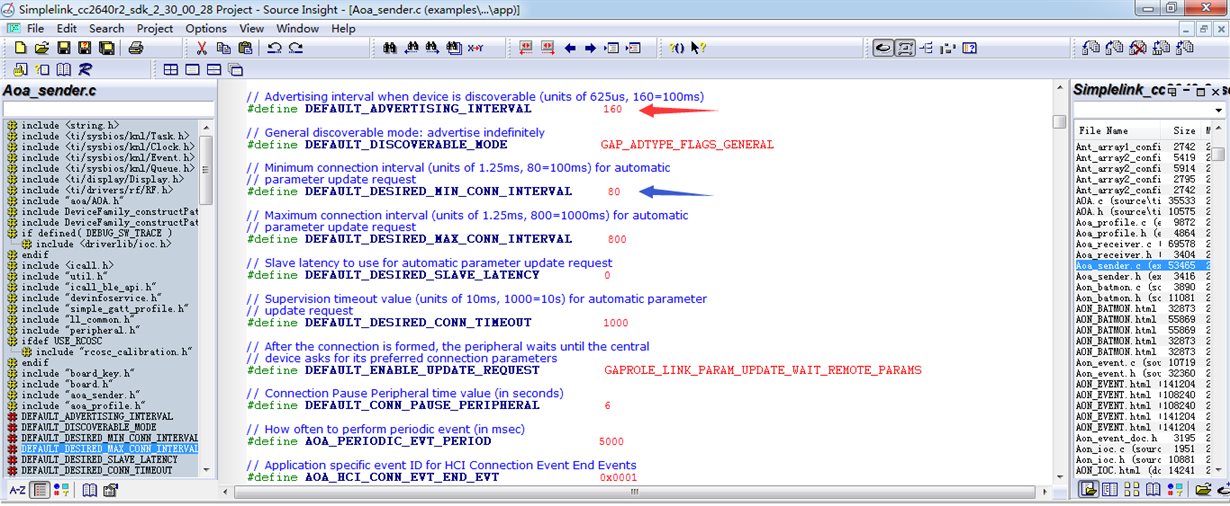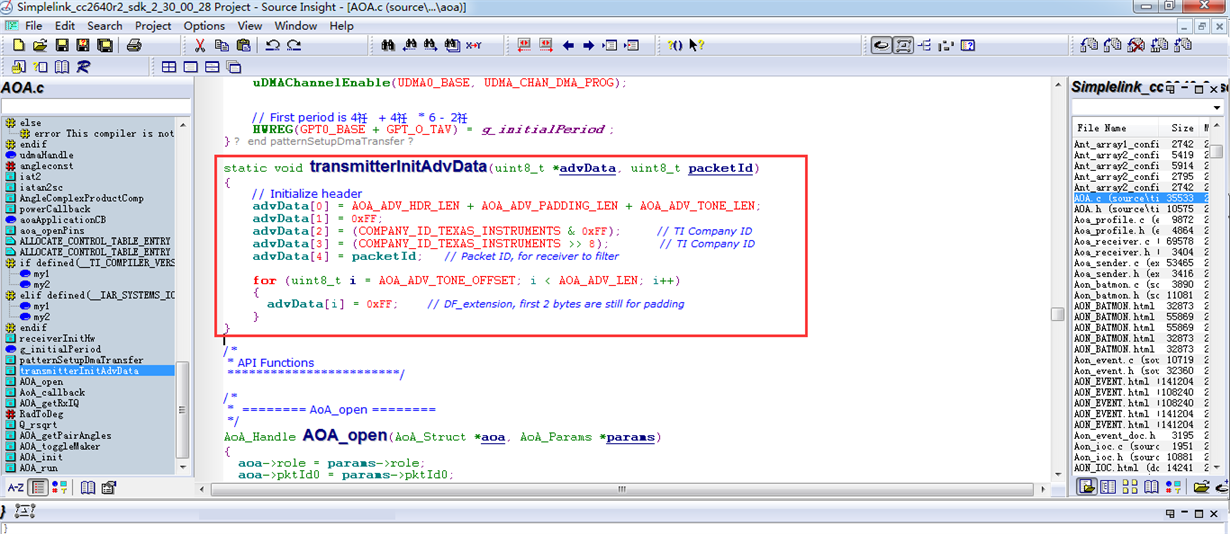Hi, Sir,
We have some questions about the IQ samples packet sent by AOA_sender,
1. as shown following, is the IQ samples packet sent during the advertising time or in the connected time? How fast is one packet sent? Is this based on the red or the blue arrow value we set in the code?
2. Could we reduce this value to faster the packet rate? what's the mininum value should we set ?
3. How many IQ samples are there in one packet?
4. If the IQ packet is sent in the advertising time , which channel is it using ? if it advertise using all the 3 channels, are the IQ samples in each advertising channel the same ? or if the IQ samples are not the same , what's the relationship between them ?



